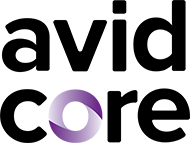April is Water Conservation Month, and the Avid Core team is committed to doing our part to secure safe, affordable, accessible drinking water for all communities and future generations. This month, we are donating to DIGDEEP, a non-profit organization working to provide rural communities in America with clean running water. We encourage you to join us to see where you can help—financially or otherwise—and to seek help when you need it.
Many of us take our access to potable water for granted. Take a minute to think about where your clean water comes from and how it gets to your faucet. It’s a hidden journey that only seems as easy as turning the tap on and off.
Experiencing life without the faucet changed my perspective on consumption and waste. I grew up on the Navajo reservation and my grandparents did not have running water. Clean water was hauled from a well several miles away and stored in barrels, eventually used to drink, clean, and cook. My grandparents survived on about eight gallons per day compared to the national home average of 350 gallons per day.
During the summer months, water was essential and not to be wasted. I remember spending time as a kid bringing in heavy five-gallon water jugs into their hogan (traditional Navajo home) to ensure that they had enough clean water to drink. Today, my Masaní (maternal grandmother) still does not have running water, and whenever I visit her, I bring in those same five-gallon jugs to make sure she has what she needs.
During the past year, my community suffered greatly from the COVID-19 pandemic. In addition to other inequities, the virus has highlighted significant gaps in water resources among tribal communities and prompted the community to conserve our water to sustain health measures. Even beyond the pandemic, practicing water conservation is an effective method for us to maintain our water supply for future generations and for rural communities to access for future use.
Clean drinking water is an extremely sensitive resource and not an unlimited one. To help put it in perspective, only 2.5 percent of the earth’s water is freshwater, of which 1 percent is accessible for drinking, agriculture, irrigation, and power generation. With dwindling sources of fresh water and fast-growing populations, we must do our part now to conserve this sensitive resource.

In my Navajo culture, water is a sacred resource. We have a phrase, “tó éí ííńá” (water is life) that you will likely find painted on windmills across the reservation. Water, to my people, is considered the very essence of life and existence. When we all take steps to conserve our water, we not only secure the long-term supply for future use, we sustain life for future generations.
What does it mean to conserve water?
Conserving water means to practice using water more efficiently to reduce waste. Practicing a low water use lifestyle helps to maintain our current water supply, helps the environment, saves on energy costs, and allows for future needs.
So why conserve now?
According to a Government Accountability Report, 40 out of 50 state water managers expect water shortages by 2024, highlighting the need to conserve water usage. Bodies of freshwater across the United States have supplied Americans with freshwater for years but changes to the climate, such as more frequent longer-lasting droughts and less precipitation, have shifted the attention to a more conservative approach. Across the western U.S., aquifers are depleting quickly due to high demand.
What can you do to conserve?
This is a significant problem that will take cooperative and comprehensive solutions to solve. While we know individual actions will only play a minor role, we believe that taking small steps matters. When we all make small changes in our daily lives together, we can create lasting change in maintaining our water supply for all to enjoy.
Here are some practical strategies you can take today:
- When washing your hands, turn the faucet a half turn instead of a full turn.
- When brushing your teeth, turn off the tap between rinsing.
- Install low-flow aerators designed to reduce the amount of flow and save on cost.
- Check for toilet leaks by placing a few drops of food coloring in the back of the toilet; if a leak is present, you’ll see the color in the toilet and you’ll know to change the toilet flapper. Leaky toilets can waste 200 gallons per day.
- Water your lawn only when necessary and avoid watering on windy days.
- Collect rainwater to water indoor plants.
- Only run full loads in your dishwasher and washing machine.
- Consider replacing old home equipment (washers, dishwashers, water heaters, toilets) with newer, more efficient appliances. According to the Environmental Protection Agency (EPA), households can all reduce their water waste by 20 percent by installing water-efficient devices and fixtures to prevent dripping.
When practicing conservation in my own life, I feel inspired and empowered to start thinking of the more significant ideas and solutions.
Let’s take these steps together this Water Conservation Month and work toward securing safe, affordable, and accessible drinking water for all communities and future generations.
